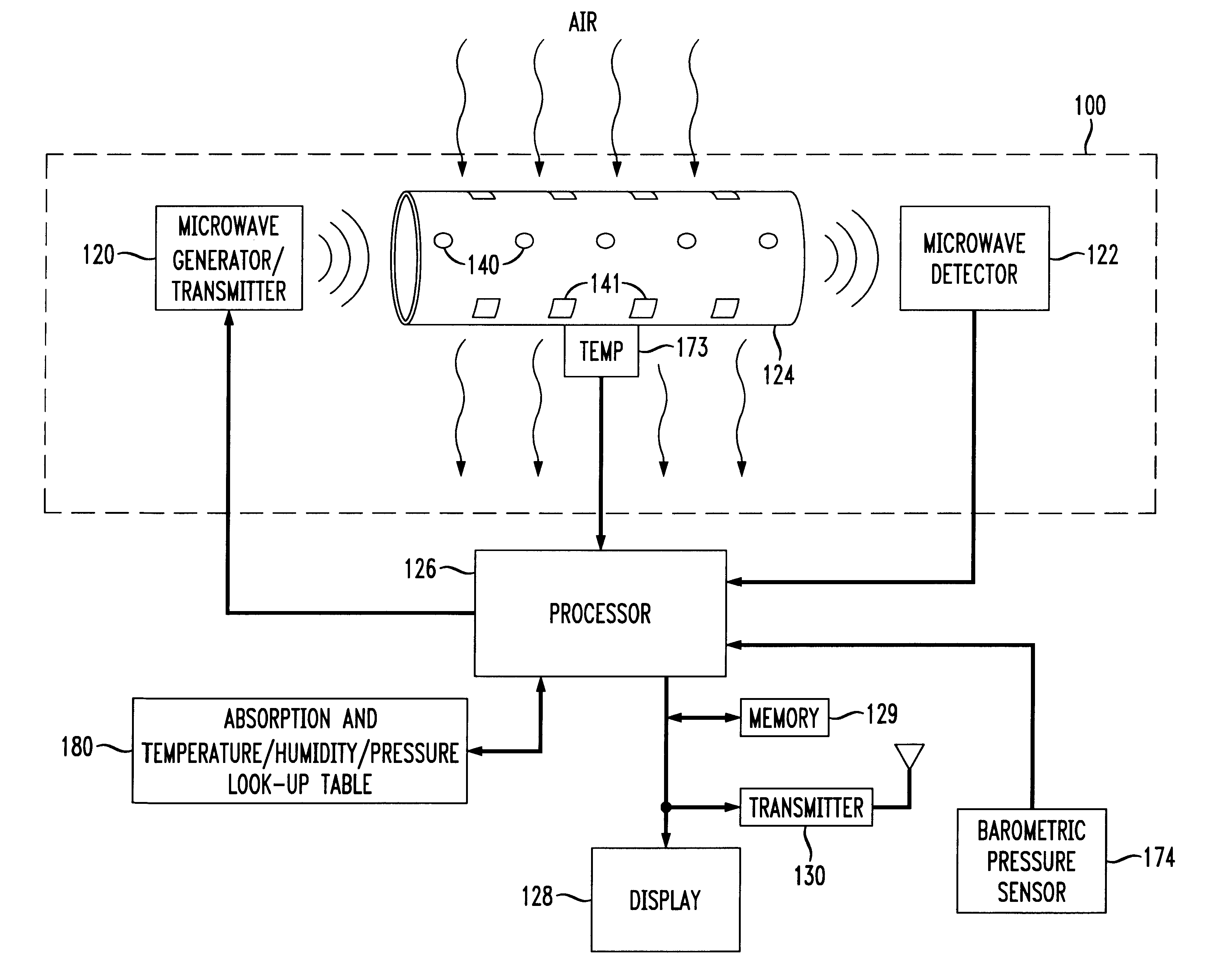Ambient humidity measurement using microwaves
a microwave and ambient humidity technology, applied in direction finders using radio waves, instruments, mechanical means, etc., can solve the problems of low measurement accuracy of humidity sensors, difficult to achieve long term ambient humidity measurement with any high degree of accuracy or reliability, and high maintenance costs of humidity sensors
- Summary
- Abstract
- Description
- Claims
- Application Information
AI Technical Summary
Problems solved by technology
Method used
Image
Examples
Embodiment Construction
The present invention provides the ability to accurately measure ambient humidity at a reasonable cost without the need for delicate moving parts, requiring minimal if any maintenance, and without the need for components which would degrade significantly over time.
In accordance with the principles of the present invention, the absorbency of microwave transmissions through a shielded structure such as a metal tube is measured and related directly to the humidity in ambient air passed through the tube.
FIG. 1 shows a block diagram of an exemplary microwave humidity sensor constructed in accordance with the principles of the present invention.
In particular, in FIG. 1, the basis of a microwave humidity sensor 100 is formed by a microwave generator / transmitter 120 fixed to one end of a metal structure 124 capable of containing an amount of microwave energy traversing an internal length thereof. The metal structure 124 includes a number of holes 140, 141 allowing passage of ambient air the...
PUM
| Property | Measurement | Unit |
|---|---|---|
| humidity | aaaaa | aaaaa |
| humidity | aaaaa | aaaaa |
| humidity | aaaaa | aaaaa |
Abstract
Description
Claims
Application Information
 Login to View More
Login to View More - R&D
- Intellectual Property
- Life Sciences
- Materials
- Tech Scout
- Unparalleled Data Quality
- Higher Quality Content
- 60% Fewer Hallucinations
Browse by: Latest US Patents, China's latest patents, Technical Efficacy Thesaurus, Application Domain, Technology Topic, Popular Technical Reports.
© 2025 PatSnap. All rights reserved.Legal|Privacy policy|Modern Slavery Act Transparency Statement|Sitemap|About US| Contact US: help@patsnap.com


